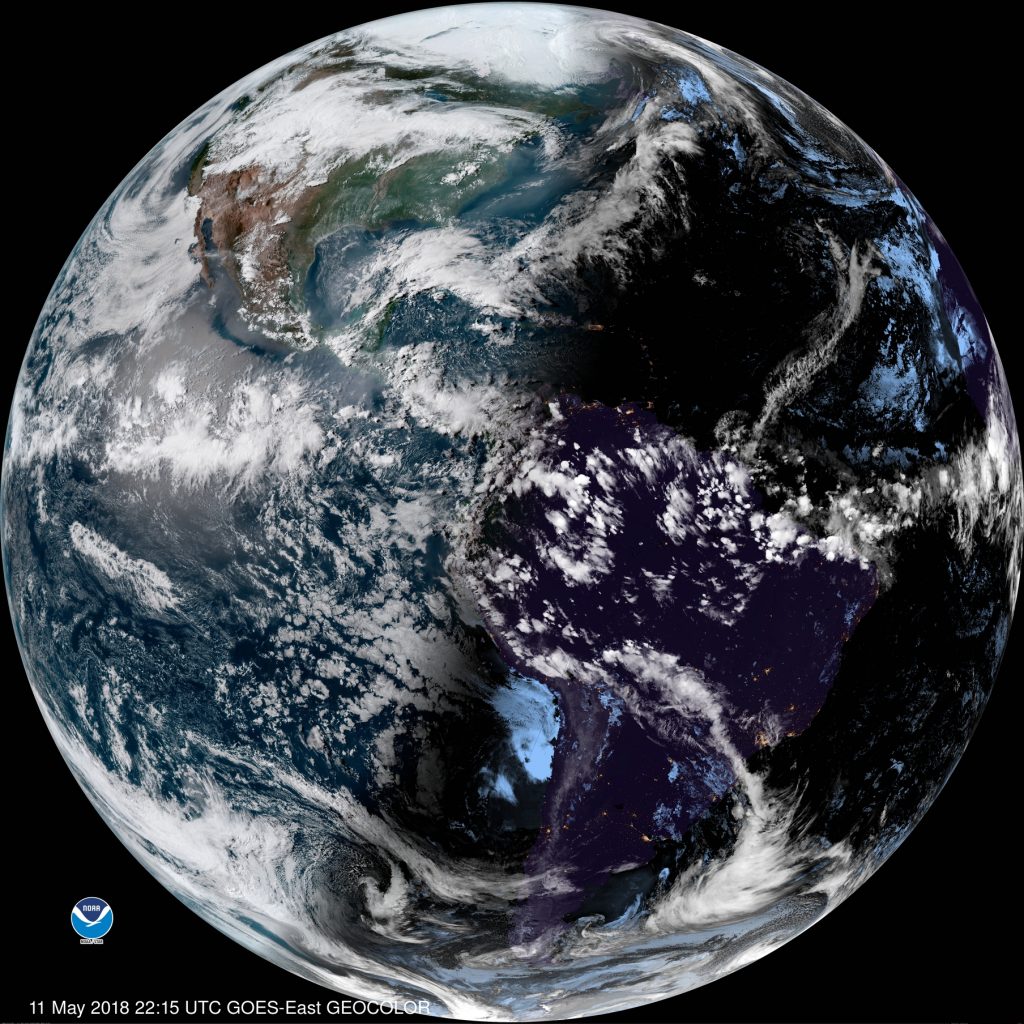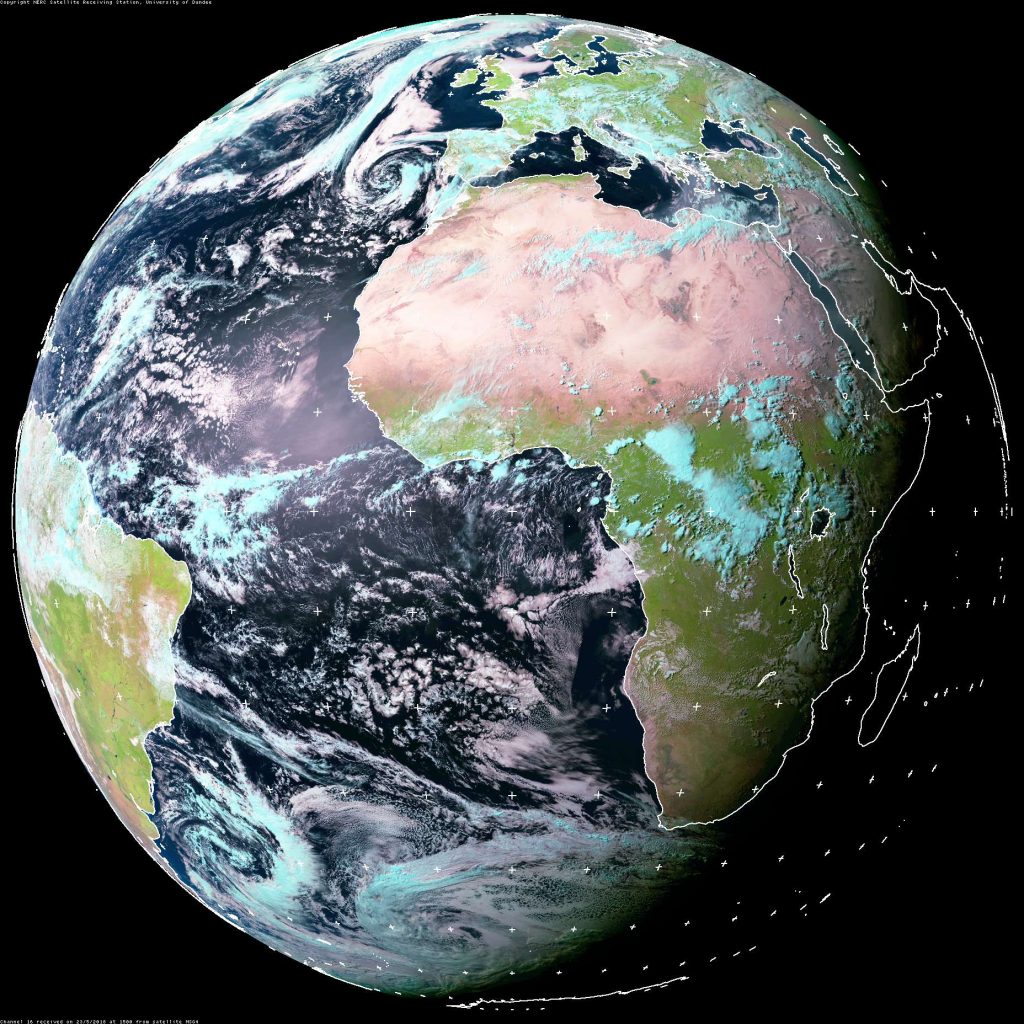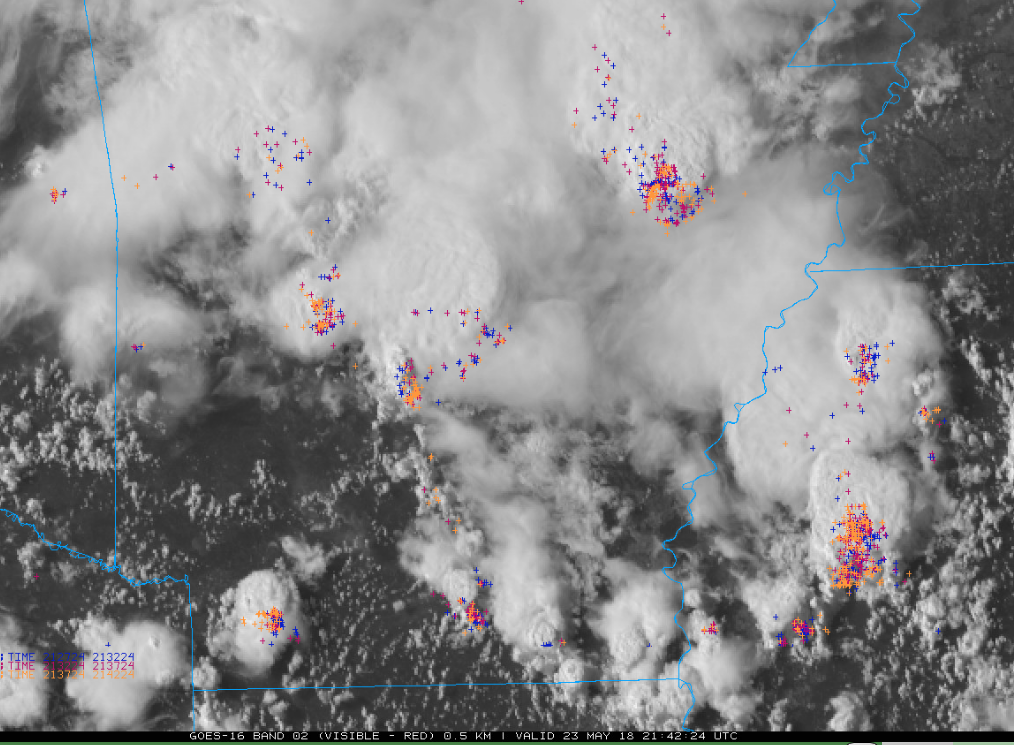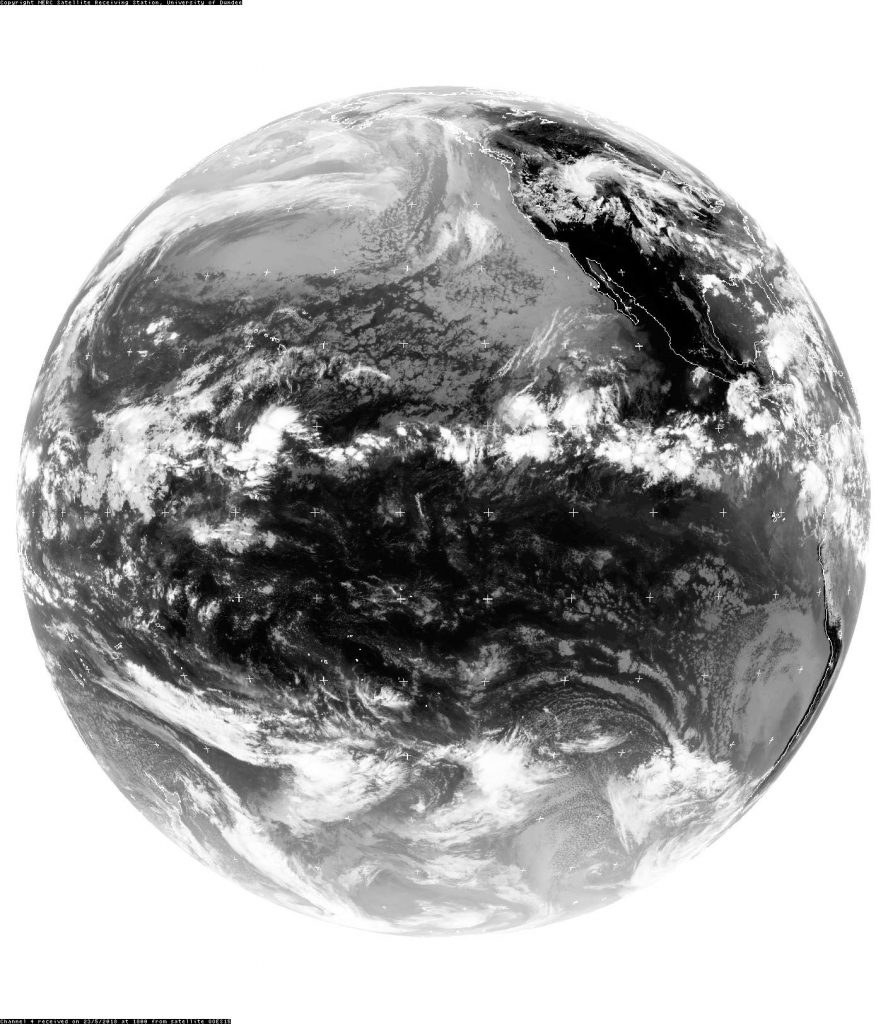23 May 2018
The New Goes-17 Weather Satellite May Have a Serious Problem
Posted by Dan Satterfield

The view Wednesday afternoon from the GOES-16 weather satellite. This satellite is revolutionizing weather forecasting. The new GOES-17 is identical and planned to cover the western U.S and Hawaii.
Update: May 25,2018
It’s been pointed out that Harris Corp. made the ABI/cooling system, but this isn’t something that requires any blame at this stage. These new GOES satellites are complex machines made of the highest high. I witnessed a GOES satellite fall into the Atlantic just after launch in 1986, and am keenly aware of how difficult it is to get a working satellite into geostationary orbit!
I’m hearing that the cooling is working but not well enough to keep the instruments cool in the local nighttime hours when the sun is shining directly on the ABI. This means a workaround is very possible and there will be daytime IR imagery.
Why cooling matters:
The instruments that record IR images see the light that is invisible to our eyes but any object with a temperature gives off radiation and that wavelength is given by Wiens equation. If you want to “see” light given off by the Earth at 289 Kelvin in the IR wavelengths the camera has to be very cold or you will see the light given off by the instrument itself! So, you cool it to a very cold temp. and you then only see the light coming up from the Earth! I am simplifying this but go here for a good primer!
Late word today that the cooling system on the GOES 17 satellite did not start properly. The cooling is needed for the functioning of the ABI imager’s infrared bands since this equipment must be kept quite cold to make proper images of the Earth. NASA/NOAA are investigating the issue and we should know more soon.
SOME GOOD NEWS:

The Meteosat has an excellent view of the Eastern Atlantic and could allow the GOES-East to be moved a bit westward to give a better look angle to forecasters on the U.S. West coast if GOES-17 cannot be fixed.
The visible imagers should not be impacted by this issue so the high-resolution visible images seem to be ok and I’ve seen preliminary lightning mapper images as well. Still, the loss of most of the IR imagery would cripple the satellite and make it far less useful to forecasters. This GOES is identical to the GOES-16 satellite which is now the GOES-East. Goes-17 is in a checkout position and will be moved to become the Goes-West when operational.
If this issue cannot be fixed, it is possible that GOES -16 could be moved back westward somewhat to give better nighttime IR imagery to the west coast of the U.S. This is more doable now than in the past because we have very good imagery from the European Meteosat. A decision like that would likely take months though and be a controversial one.
The loss of GOES-17 IR data would be a crippling blow to forecasters over the western U.S. This new generation of satellites is currently revolutionizing weather prediction, as GOES-16 sends back amazing data in real time. This data along with the new lightning mapper is making the monitoring and nowcasting of severe weather much more accurate. In my 38 years as a forecaster, there has never been a jump if this magnitude in technology.

Thunderstorms over Arkansas Wednesday evening with lightning flashes detected by the satellite. Total flashes is a much better indicator of storm strength than just cloud to ground flashes. They can give advanced warning that a storm may be about to become severe. So far, this instrument on the new GOES-17 seems ok.
The view below is from the old GOES-West satellite (working well) and shows the view that GOES-17 will have when it is moved to its operational position. The older GOES is in good shape but it does not have the resolution of the new satellite or as many channels to see water vapour etc.
The news this afternoon is certainly not good news for Lockheed-martin who built the satellite at a cost of around 11 billion dollars for four of them. There is also no way that they can be repaired by humans in orbit. The last time we had the ability to put astronauts in an orbit of 40,000 km was 1972. In those days, politicians and widely read newspapers did not regularly make preposterous statements accusing scientists of perpetuating giant hoaxes.



 Dan Satterfield has worked as an on air meteorologist for 32 years in Oklahoma, Florida and Alabama. Forecasting weather is Dan's job, but all of Earth Science is his passion. This journal is where Dan writes about things he has too little time for on air. Dan blogs about peer-reviewed Earth science for Junior High level audiences and up.
Dan Satterfield has worked as an on air meteorologist for 32 years in Oklahoma, Florida and Alabama. Forecasting weather is Dan's job, but all of Earth Science is his passion. This journal is where Dan writes about things he has too little time for on air. Dan blogs about peer-reviewed Earth science for Junior High level audiences and up.
Dan – It should be noted that the problem is not with the Lockheed Martin-built spacecraft, but with the ABI instrument built by Harris.
It would be nice if you would point this out. .
As stated by NOAA in the press conference, the suspect heat pipe cooling system is part of the ABI – not the spacecraft. (See your last paragraph, which calls out Lockheed Martin). Also as pointed out by NOAA, other features of the spacecraft are working fine.
Respectfully,
Jamie Hawkins
Lockheed Martin
Good point- thnx!